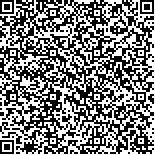下载中心
优秀审稿专家
优秀论文
相关链接
摘要

对遥感器及其图像的在轨辐射性能(信噪比、相对辐射定标精度、绝对辐射定标精度和动态范围)评估是检验遥感器定量应用能力的重要任务之一。本文结合高分五号卫星可见短波红外高光谱相机AHSI(the Advanced Hyperspectral Imager)在轨性能评估任务,依据卫星发射以来的在轨测试数据,介绍了AHSI相机在轨辐射性能评估的原理、方法及相应测试情况。测试结果表明:AHSI信噪比可见近红外最高达到近700,短波红外最高达到近500;相对辐射定标精度误差小于0.5%,星上绝对辐射定标不确定度小于3%,场地绝对辐射定标真实性检验精度误差小于5%;动态范围在轨可见短波均可以256档增益精细调整。AHSI在轨辐射性能良好且稳定,能够有效支持后续定量化应用需求。
The Advanced Hyperspectral Imager (AHSI), one of the six payloads on China’s GF-5 satellite that was launched on May 9, 2018, is a visible/short-wave infrared hyperspectral imager built by Shanghai Institute of Technical Physics (SITP), Chinese Academy of Sciences (CAS). In order to verify and validate the on-orbit radiometric performance of AHSI, and improve quantitative application of the AHSI data, the instrument conducts on-orbit radiometric characterizations from June 2018 to April 2019. Solar calibration and vicarious calibration were both utilized. Observational and calibration data of well-known calibration sites, such as, Dunhuang and Baotou calibration field in China, were acquired and analyzed to determine whether the pre-flight characterization was still applicable to on-orbit operations. These data was used to measure specific instrument parameters, such as, in corresponding order, (1) Signal to Noise Ratio (SNR), (2) relative and absolute radiometric calibration accuracy, (3) uncertainty of on orbit absolute radiometric calibration, (4) validation accuracy of site absolute radiometric calibration, (5) dynamic range and (6) radiometric performance stability. The definition of these parameters as well as the acquisition of the coefficients of relative and absolute radiometric calibration has been illustrated. Results show that the SNR of AHSI reaches up to 700 at a wavelength of about 500 nm, and 500 at a wavelength of about 1500 nm, the error of relative and absolute radiometric calibration are smaller than 0.5% and 3%, respectively, the uncertainty of on orbit absolute radiometric calibration is within 2.59%(VNIR) and 2.68%(SWIR), the error of the validation of site absolute radiometric calibration is smaller than 5%, and the dynamic range can be fined with 256 gain. In particular, with the image motion compensating, the integration time can be prolonged and the SNR can be further increased, therefore, object/region with weak signal, such as, the sea/lake, the Antarctic and the Arctic can also be observed. In addition, the variation of the dark level, SNR, and the coefficients of relative radiometric calibration from September 2018 to March 2019 are all much less than 1%, meaning that the radiometric response and noise value are stable, which in turn reflects that the radiometric performance of AHSI is stable. The on orbit characterization of GF-5/AHSI lasted for seven months and with continuing assessment of the instrument throughout the first year of operations. As it can be seen, the AHSI has good and stable on-orbit radiometric performance, i.e., high SNR, high calibration accuracy, and high consistency. Therefore, the data of AHSI is highly reliable and can be used in quantitative applications.

